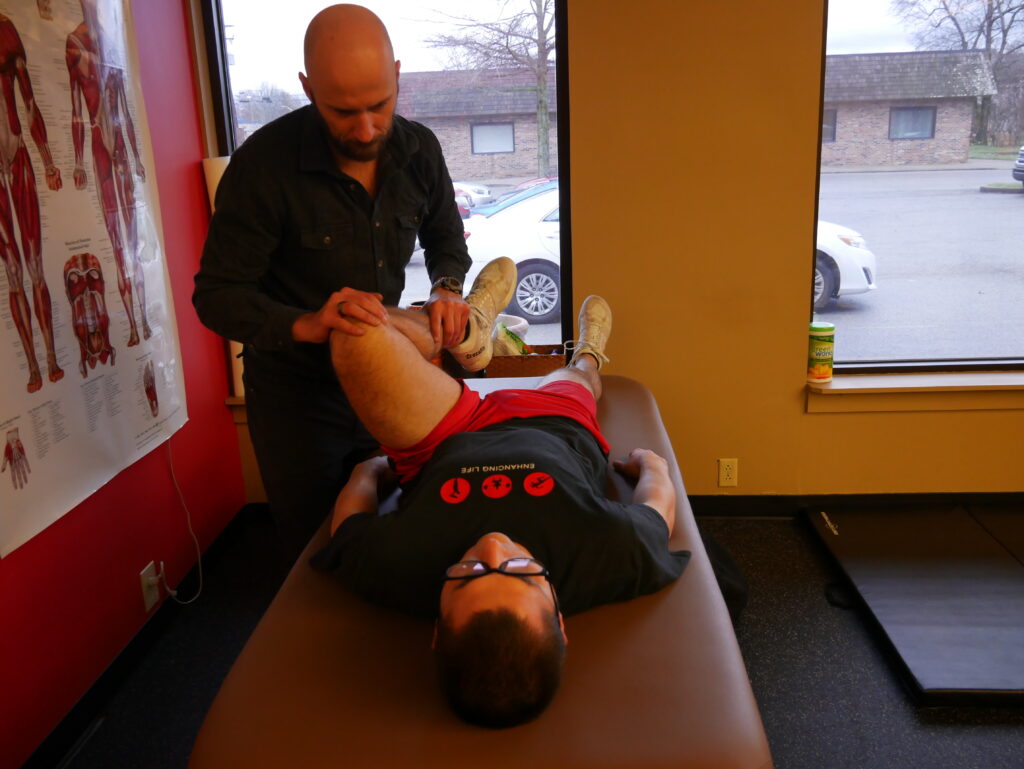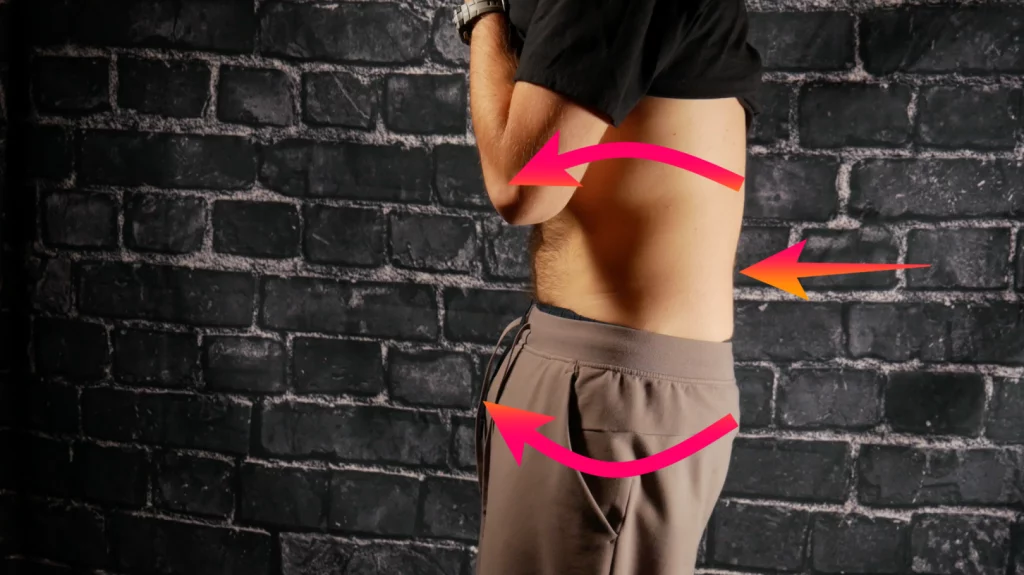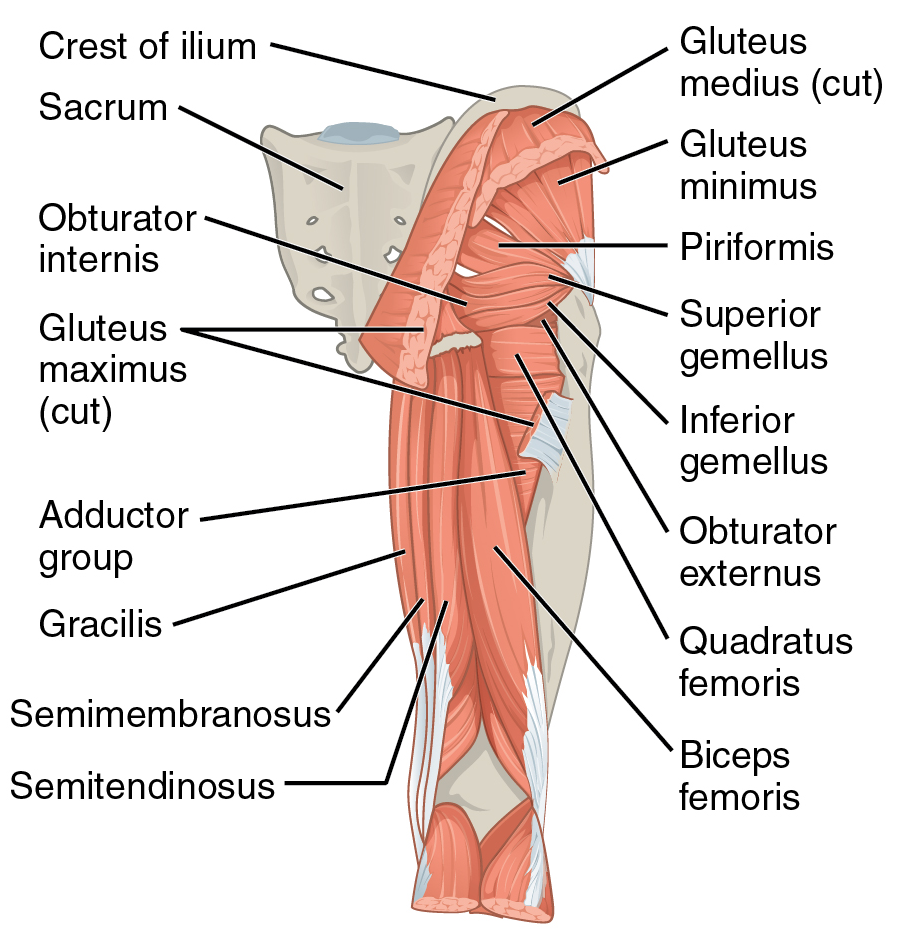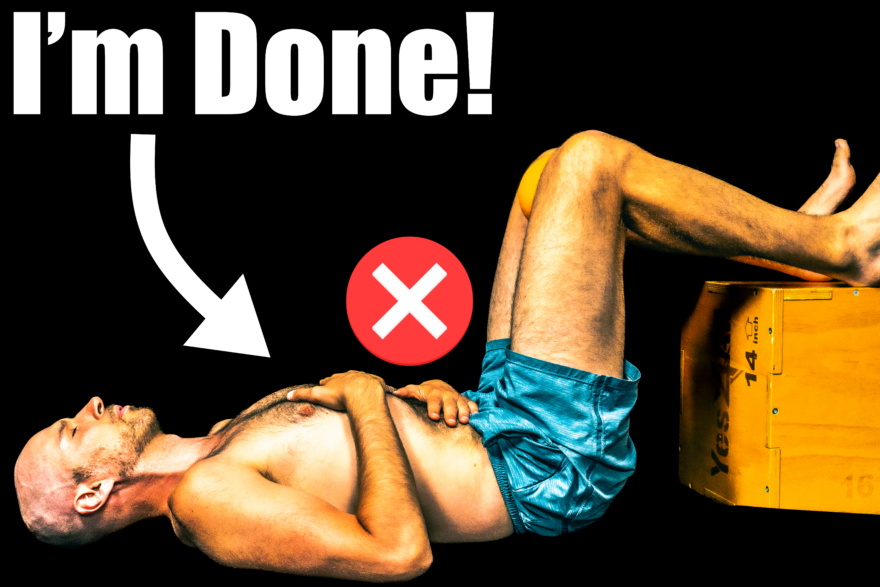Table of Contents
90-90: A Love-Hate Relationship ??
No doubt you’ve seen the popular mobility exercise called the Lewit or 90-90 hip lift. It’s a popular movement that’s often used to:
- Teach basic breathing mechanics
- Improve mobility
- Reduce pain
It’s an exercise I used a lot early in my career, and got great results with it.
The keyword: used.
You see, me and this move had some good times, but that’s until I found out something terrible.
Like your ex, it’s got some issues. ?
I’m going to show you:
- Why this exercise is NOT a great starting point
- Where to start someone instead
- How to coach this exercise differently so it can work better
Read the blog, watch the video, and listen to the podcast to learn!
Why 90-90 and I Broke Up ?
There exist 3 shortcomings with that exercise that caused me to move away from using it.
1. Hip flexion demands ?
As the name suggests, performing this exercise requires 90º of hip flexion.
There’s a big problem with that.
Have you ever measured someone’s hip flexion range? RARELY does someone have an authentic 90º hip flexion from the jump.

Instead, something happens when you flex the hip up. It’s common for the pelvis and/or lumbar spine to posteriorly tilt during the movement. This action gives the appearance of more hip flexion than is actually present. As the great philosopher Mike Tyson once said: It’s spinal.

The Lewit/90-90’s goal is to improve pelvic and femoral dynamics. Is that going to happen if most movement is coming from the lower back?
Doubtful Rube. Highly doubtful.
Before attempting this exercise, it’s wise to have a clean 100-110º of hip flexion. There are two reasons for that:
- You aren’t attempting the movement at someone’s end range. End range creates more tension, which limits movement
- You limit lumbopelvic rounding.
2. The Order of Operations ?
Ever try taking your socks off while keeping your shoes on? It’s tough (trust me, I tried while researching this blog)!
It’s clear that there is a sequential order in going barefoot. Shoes come off first, then socks.
Improving movement ALSO has a sequential order. Movement occurs with external rotation (ER) BEFORE internal rotation (IR).
ER ➡️ IR ➡️ ER
We see this during hip flexion. Look at the posterior hip rotators. In the early (0º-45º) hip flexion ranges, they have an external rotation action.

Something magical happens beyond 45º.
Here, the posterior rotators begin developing an internal rotation component. This action maximizes between 90º-100º of hip flexion (Source).
But I can’t have that IR unless I have the ER before.
90-90 is often a starting exercise with people, but what if you have someone who has limited ER? (Which, FYI, is SUPER COMMON).
You are trying to knock that person’s movement socks off while they are still wearing shoes. AWKWARD!
This is another factor that can contribute to lumbopelvic orientation.
3. The Posterior Pelvic Tilt = Overrated ?
I used to coach tucking the hips A LOT. I was a bad mothertucker you might say.
But as I’ve learned, this movement strategy can be problematic. It’s quite difficult to differentiate moving only the pelvis from the lower back. If my goal is to improve pelvis dynamics, I need to ensure I’m creating most of the movement there. Tucking the hips does NOT do that.
What’s the Alternative to 90-90? ?
I get it. It’s hard to break up with an exercise you may love. But have I got a rebound for you!
This exercise progression does all the things 90-90 cannot:
- Minimizes lumbopelvic rounding
- Works within the normal restoration progression
- Contains ZERO finicky pelvic tilts.
Here’s where to start:
1. Supine Hip Extension
This move is great because it works within early hip flexion ranges, promoting ER.
Instead of pelvic tilts, we will use ground contact to get desired muscle activity. Although it’s a bit technical, you are more likely to get the motion gains you desire.
Here’s how to do it:
- One foot atop a foam roller. Sole against the wall
- The opposite foot is on the ground, relaxed.
- Sense the bony parts above the pelvis (the PSIS). If you can’t, slightly bend the knee and hip that’s on the wall a bit more.
- Get a bit of weight onto the wall. Push through the inner heel and the base of the big toe. Stay heavy on the PSIS during.
- GENTLY lift the leg on the ground up, keeping hip and knee flexion.
- Do the above right and you’ll feel the wall-leg hamstring working.
- Silent nasal inhale.
- Soft mouth exhale.
- The breath should not be a maximal inhale or exhale.
- Perform 3-5 sets x 5 breaths, 2 times per day for 2-4 weeks
2. Hooklying Breathing
Once you’ve mastered the supine hip extension move, it’s time to move onto hooklying. The hip flexion demands are a bit greater, and there’s a bit more risk of lumbar rounding since it’s bilateral. But that’s why we started with the move before, yo! ?
Here are the steps:
- Lie on your back with knees bent
- Place a small ball/yoga block between your knees.
- Emphasize the same weight-bearing points as before: PSIS, inner heel, and big toe base.
- Without bridging up or tucking, ramp up even weight among these points.
- Get it right and your hamstrings will work.
- Hold position
- Silent nasal inhale.
- Soft mouth exhale.
- The breath should not be a maximal inhale or exhale.
- Perform 3-5 sets x 5 breaths, 2 times per day for 2-4 weeks
The Return of the 90-90 Exercise (But Different) ?
If you’ve mastered the prior moves and you now have the following:
- 100-100º authentic hip flexion
- Limited hip IR
Now’s your time. Time to Lewit like a BOSS.
BUT.
We are going to coach it differently to STOP lumbar flexion. You’ll actually gain that hip IR that you OH SO DESIRE! (vid is one I typically do more)
- Lie on your back with a 90-degree angle at the hip and knees. Feet resting on a wall.
- Place a small ball/yoga block between your knees.
- Emphasize the same weight-bearing points as before: PSIS, inner heel, and big toe base.
- Without bridging up or tucking, ramp up even weight among these points.
- Get it right and your hamstrings will work.
- Hold position
- Silent nasal inhale.
- Soft mouth exhale.
- The breath should not be a maximal inhale or exhale.
- Perform 3-5 sets x 5 breaths, 2 times per day for 2-4 weeks
If you’re having a tough time getting the back of the legs to work, lift one leg off the wall. Make Michael Jackson proud (heehee)! More hamstrings = more mobility gainz!
Sum up
There you have it, folks! The reasons why I don’t start with Lewit/90-90, and what to do instead.
To recap:
- 90-90 encourages lumber rounding
- Restore ER before IR
- Coach foot contacts and easy breathing instead of tucking
Now I may have taken away your first move. Aside from these exercises, are there better starting choices?
Yes.
In fact, I would check out this blog. Here, I go through my 5 starting moves that I use with a bulk of patients and clients. They improve mobility LIKE WHOA!

